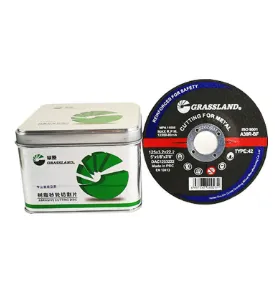

Over the years, I've had the opportunity to test a variety of cut-off discs from numerous brands. One characteristic that consistently stood out in the better-performing discs was their balance between hardness and flexibility. The ideal disc should be able to cut through aluminum swiftly while being flexible enough to prevent cracks or breaks during operation. A thick disc may last longer, but it often sacrifices the precision needed in detailed projects. Conversely, a thinner disc offers cleaner and faster cuts but may need more frequent replacing. Authoritativeness in the metalwork industry comes from not just using the right tools but understanding why they work. For instance, the inclusion of additives like fillers and resins in certain cut-off discs can greatly reduce the heat generated during cutting, preventing the aluminum from warping or losing its temper. This knowledge differentiates a seasoned professional from an amateur, ensuring that each project remains safe and efficient. Trustworthiness lies in consistently delivering high-quality results, and the choice of a cut-off disc plays a pivotal role in this. My recommendations always include verifying the manufacturer's authenticity, checking for certifications that guarantee safety and performance, and reading reviews for real-life feedback. A reliable disc from a reputable brand equates to fewer accidents and mishaps in the workshop. In conclusion, selecting the optimal cut-off disc for aluminum is a process that involves understanding the metal's nature, the disc's composition, and the project's complexity. By focusing on these elements, one can achieve smooth, precise cuts that uphold the structural integrity of the aluminum. Trust in the tools you choose, backed by experience and knowledge, ensures not only the success of a project but also the safety and efficiency of your operations. As materials and technologies evolve, staying informed and adaptable will keep your skills sharp and your outcomes exceptional.
Post time:Feb - 10 - 2025

















